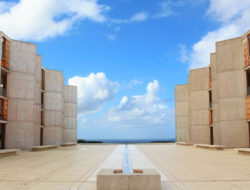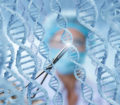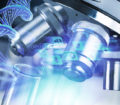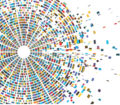In the 20 months since Elizabeth Blackburn became Salk Institute president, she has presided over a large restoration project for the iconic campus, a $25-million gift from the Helmsley Charitable Trust, and a trove of groundbreaking science.
Blackburn first came to the world’s attention for her work on telomeres and telomerase, which earned her a share of the 2009 Nobel Prize in Physiology or Medicine when she was at UC San Francisco. If our chromosomes are shoelaces, telomeres are the end caps that keep them from unraveling. They get shorter every time a cell divides, but the enzyme telomerase can rebuild them a little and keep them from aging. Since the primary danger of cancer cells is their out-of-control division, scientists think inhibiting telomerase might cause cancer cells to age and die just like normal cells. Recently, we caught up with Blackburn and chatted about the Nobel Prize and life at Salk.
What was the day like after Stockholm called?
Well, the telephone call came at two a.m., and at that hour it’s usually bad news, so my heart was pounding as I answered. To my surprise, I heard a rather Swedish-sounding voice telling me I’d just won the Nobel Prize. I do remember him seriously advising to get myself a cup of coffee because the reporters would be swarming my front yard in a very short time.
First, we tried to call our family members, as various time zones allowed. Then John, my husband, went around the house helping the TV crews—who had indeed arrived—find the right power outlets so our home’s electricity wouldn’t fuse from their equipment. Then I went to UCSF. The rest of the day is a bit of a blur, although I do remember a rather Champagne-rich waterfront lunch with my lab members.
How has the Nobel altered your career arc?
In some ways little changed, and I wanted it to remain so. Scientific research is demanding, and I wanted to stay in the thick of it. But also, being a female Nobel Prize winner in the sciences does both give one a feeling of responsibility as well as open some doors. I find that people now listen to what I have to say, seemingly no matter the topic.
How has it changed the trajectory of telomere science?
There wasn’t much known about telomeres when I began studying them in the 1970s. In the last 20 years, research has made clear that telomere attrition is linked with cardiovascular disease, cancers, lung disease, diabetes, and even Alzheimer’s. Here at the Salk Institute, researchers are investigating ways to exploit the biology of telomeres and their maintenance, optimizing it in aging bodies or dampening it in cancer cells. There’s still so much to learn and the potential is very exciting.
How do you like San Diego?
I love living here. Both San Diego and the mesa are amazing places to live and work. I never get tired of looking at the sea. And, hey, the sunshine doesn’t hurt, either. But most importantly, the concentration of scientific talent on the Torrey Pines Mesa has to be one of the best in the country. I’m not the only Nobel laureate working here; this place is rich in accomplishment. Nearly every day, I believe, important discoveries are emerging that have the potential to benefit humankind.
The 2017 Nobel laureates will be announced in early October.
Tags: Elizabeth Blackburn, People, Salk Institute, Tip Sheet






























